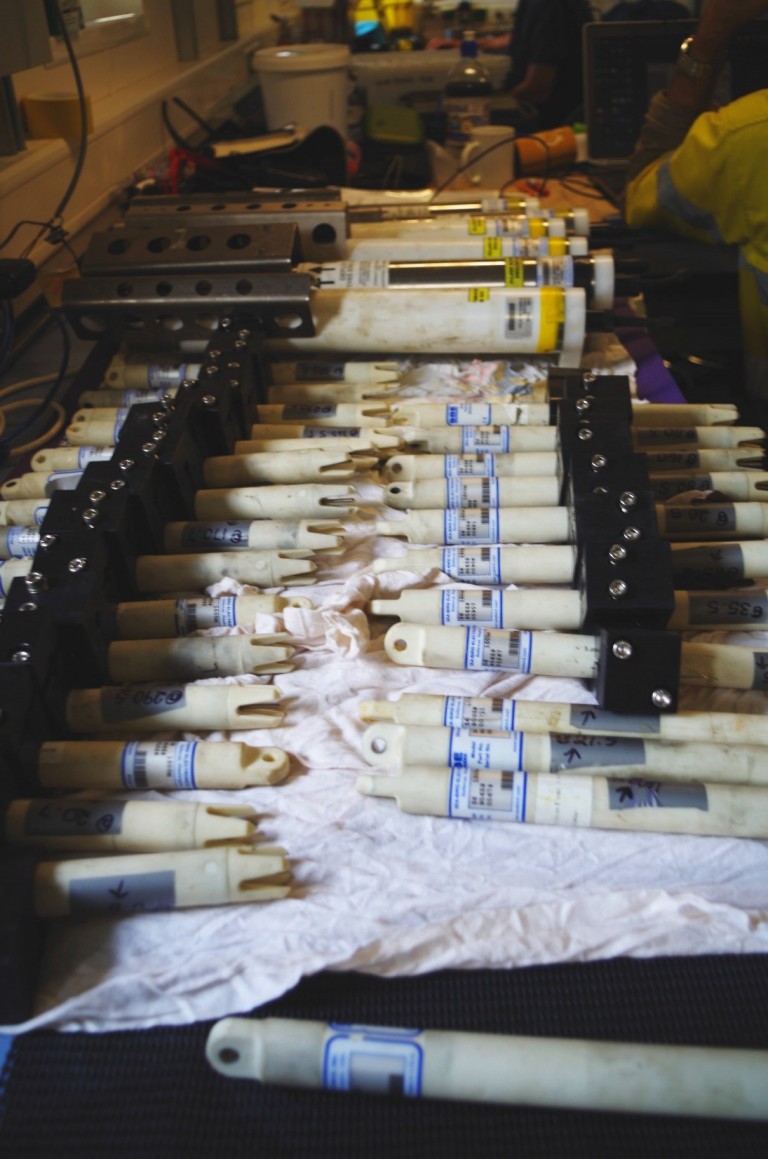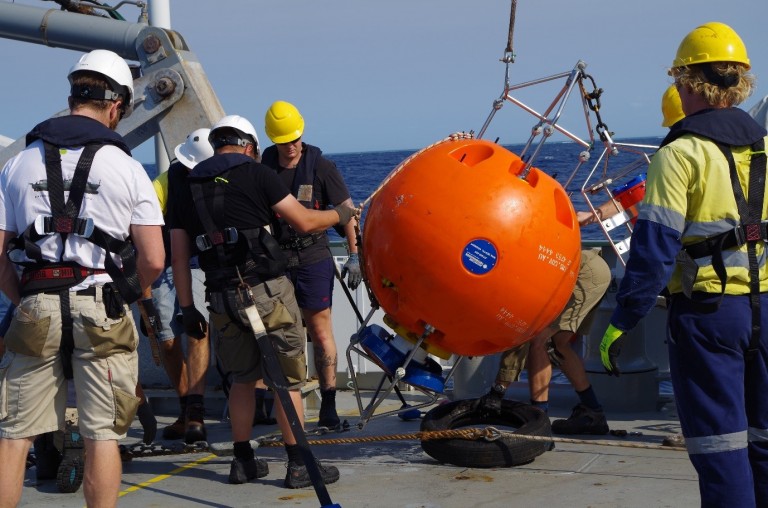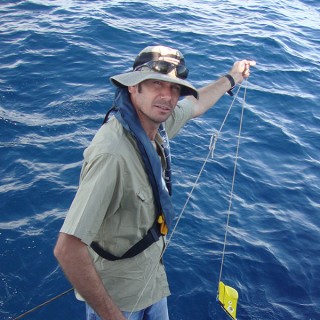
Science at sea is, above all else, a team effort. Scientific activities performed on Falkor require the ship’s crew and science party to work hand-in-glove; from ROV dives to CTD casts to work boat operations, every task is carefully choreographed to ensure objectives are met effectively, efficiently, and safely. And like a good dance routine, the sequence of steps and manoeuvres to be undertaken by each participant is carefully planned and rehearsed, before it is performed.
Careful coordination for retrieval

With our research voyage now entering its final week, the team’s attention has turned to retrieving the equipment that we deployed at various places in and around Scott Reef. Today we recovered the ocean moorings from the deep channel between North and South Scott Reef that we deployed more than two weeks ago, in water hundreds of meters deep. The task of retrieving a 400m long mooring, in a narrow channel with strong tidal currents, is no easy job, and calls for focused co-ordination of the Falkor crew and science party.
A play by play of the retrieval
The steps of today’s performance went something like this:
Captain Buchner positioned Falkor to within a few hundred metres of our mooring location, holding the vessel against the relentless push of the tides and the wind. Once in position, members of the science party lowered an acoustic transponder over the side of Falkor and made contact, via an acoustic signal, with the release mechanism at the base of the mooring. With approval from the Captain, the mooring was released to float to the surface, where all eyes scanned the choppy ocean surface for the mooring floats that we last saw more than two weeks ago. Once spotted, Falkor was slowly but precisely brought alongside the now floating equipment to enable it to be hooked by a grapple skilflully thrown by the ship’s Bosun. With the mooring now snagged, the floats were brought to the starboard bay of the Falkor, where a steel wire cable was swiftly hooked through a lifting lug. At every stage, the ships officers relayed the current stage of the operation to the Captain and the ship’s deck crew. Now attached via a strong winching wire, the ship was maneuvered to ensure the mooring was trailing behind Falkor, well away from the spinning propellers. This is important as hanging below the mooring floats were wires that sank to a depth of 100m with scientific instruments worth hundreds of thousands of dollars each, containing priceless data. With Falkor held into the wind and current, the moorings were slowly winched on board, a process that took more than one hour. The deck crew stopped the winch every 15m to enable instruments to be removed.
In total, more than 60 individual instruments were recovered from the three moorings that were retrieved. They will provide us with many hundreds of Megabytes of data on the ocean conditions in and around Scott Reef.

